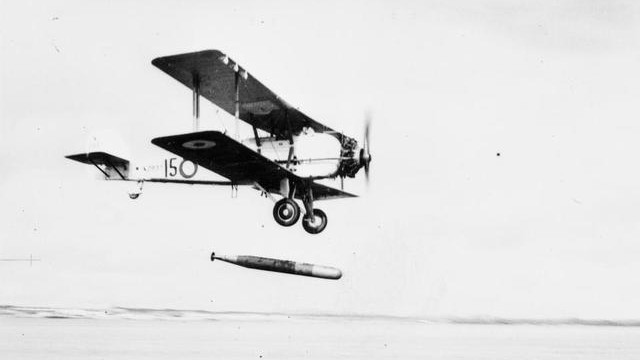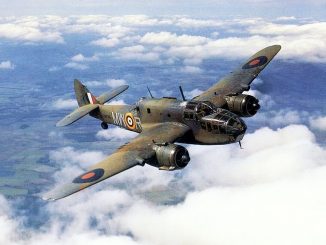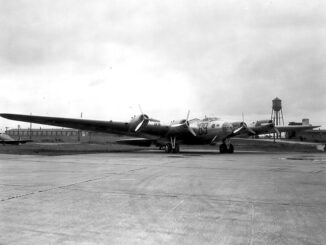
The Vickers Vildebeest was originally designed in response to a 1925 request by the RAF for a new high-altitude bomber. The prototype was first flown in 1928, winning the competition over Blackburn and Handley-Page designs, and was ordered into production in 1931. The Vildebeest was already considered very obsolete when war broke out in 1941, but was thought capable of standing up to the supposedly inferior aircraft that the Japanese were flying.
All metal construction of airframe, but with a fabric covering. The only version to remain in service by 1942 was the Mk III which added an extra crew member. The later Mk IV had a more powerful Perseus engine, but this was not suitable for use in the tropics due to overheating problems and so only the Mk III was assigned to the Far East.
In 1941 the Vildebeest was assigned to 36 and 100 Squadrons, based at Singapore, and a small detachment also flew the aircraft from Kai Tak in Hong Kong. The Hong Kong Vildebeests were destroyed on the first day of the fighting, but the two squadrons at Singapore fought for several weeks in the face of superior Japanese aircraft. They conducted largely unsuccessful torpedo attacks against transports during the initial landings on Malaya, and then fought a losing battle during several bombings raids on the advancing Japanese troops.
As Singapore looked likely to fall the Vildebeests pulled back to Sumatra where they continued their futile defensive operations. However, the aircraft were gradually destroyed until just two remained, and these were destroyed attempting to withdraw to Burma.
Vickers Vildebeest Specifications
| Vickers Mk I Vildebeest | |
| Role | Torpedo bomber |
| Crew | 2: Pilot and observer |
| Powerplant | 1x Bristol Pegasus IM.2 (590hp) |
| Speed | 140mph (max) |
| Ceiling | 19,000ft |
| Range | 1,250 miles (internal) |
| Armament | 1x Vickers K 1x Lewis gun |
| Ordnance | 1,100lb bombs 1 torpedoes |
| Dimensions | 36ft 8in (length) 49ft 0in (wingspan) 14ft 8in (height) |
| Wing Area | 728 sq.ft. |
| Weight | 4,229lb (empty) 8,100lb (gross) |
| Number produced | 22 |
| Vickers Mk II Vildebeest | |
| Role | Torpedo bomber |
| Crew | 3: Pilot, observer, gunner |
| Powerplant | 1x Bristol Pegasus II (625hp) |
| Speed | 143mph (max) |
| Ceiling | 19,000ft |
| Range | 1,250 miles (internal) |
| Armament | 1x Vickers K 1x Lewis gun |
| Ordnance | 1,100lb bombs 1 torpedoes |
| Dimensions | 36ft 8in (length) 49ft 0in (wingspan) 14ft 8in (height) |
| Wing Area | 728 sq.ft. |
| Weight | 4,773lb (empty) 8,500lb (gross) |
| Number produced | 30 |
| Vickers Mk IV Vildebeest | |
| Role | Torpedo bomber |
| Crew | 2: Pilot and observer |
| Powerplant | 1x Bristol Perseus VIII (745hp) |
| Speed | 156mph (max) |
| Ceiling | 19,000ft |
| Range | 1,625 miles (internal) |
| Armament | 1x Vickers K 1x Lewis gun |
| Ordnance | 1,100lb bombs |
| Dimensions | 37ft 8in (length) 49ft 0in (wingspan) 14ft 8in (height) |
| Wing Area | 728 sq.ft. |
| Weight | 4,724lb (empty) 8,500lb (gross) |
| Number produced | 18 |




There are MANY warplanes and ships I was were in production that were important during the War, but not many reproduced for the modeler. It is too bad these can not be available, such as ALL the battleships at Pearl, the planes on all
sides that seem forgotten, or the ships of Jutland. The Brewster Buccaneer i think was the torpedo bomber?